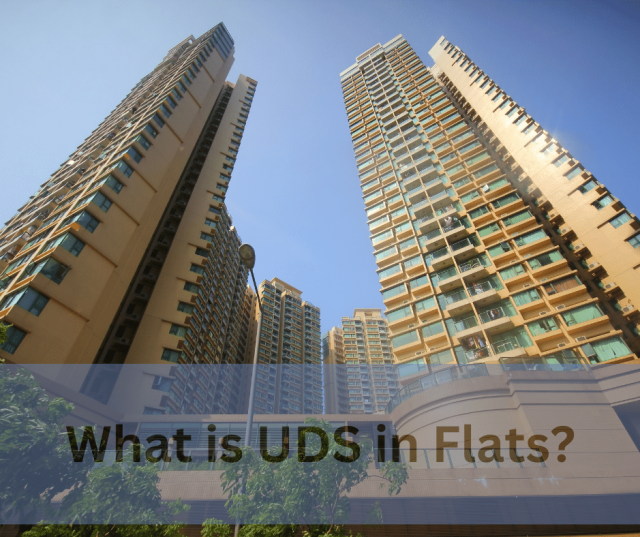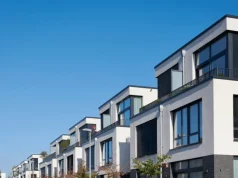Choosing an apartment over an individual plot is a decision many embrace for its modern conveniences. However, a cloud of uncertainty often hovers – does the value of an apartment depreciate over time? The question is all about what is uds in flats.
When investing in an apartment, you’re acquiring a structure and a stake in the land beneath it. In the world of flats and apartments, you should know a crucial term: UDS, or Undivided Share of Land. It’s an important player in property ownership, not just some fancy language.
Knowing how to calculate UDS may be very helpful, regardless of an investor’s or first-time buyer’s experience level. This blog article aims to simplify UDS and provide you with the tools to utilize it strategically to increase the value of your home.
Also Read: what is the difference between sale and agreement to sell
Understanding UDS in Flats
What is uds in flats? UDS, or Undivided Share of Land, is a term frequently encountered in real estate. Especially in the context of multi-unit developments such as flats and apartment complexes. It refers to the proportionate share of the total land and common areas assigned to an individual flat or apartment.
Essentially, it represents a fractional ownership of the collective property, emphasizing the shared nature of certain areas. In simpler terms, when you own a flat, you aren’t just acquiring the physical space within your unit. You are also gaining a stake in the overall land and common amenities the entire building stands on.
This shared ownership fosters collaboration, defines rights and responsibilities, and influences various aspects of property transactions.
Also Read: What are builder floor apartments
The Significance of UDS in Flats: Unlocking the Key Aspects
Ownership Basics: What UDS Means for You
UDS defines how you own your property within the larger building. It goes beyond having a flat; it’s about being a part-owner of the entire development.
Legal Stuff: UDS and the Rules of the Game
UDS lays down the rules. It tells you what you can and can’t do within the legal framework of the property. It’s like the manual that guides your rights and responsibilities.
Amenities Access: How UDS Decides Your Share
Have you ever wondered how parking spots and common areas are decided? UDS is the magic wand. Your percentage of UDS determines what you get access to.
Money Matters: UDS and Your Wallet
UDS plays a role in the money game. It affects how much you pay for the upkeep of shared areas. Think of it as your contribution to keeping the building in good shape.
Resale Value: UDS and the Price Tag
When it comes to selling your flat, UDS steps into the spotlight; a higher UDS means a higher value for your property. It’s like having a bigger say in the property’s worth.
Decision Power: UDS in Community Living
UDS is about everyone in the building, not just you. It allows you to participate in decision-making, from casting ballots to influencing community policies.
Property Evolution: UDS and Changes in the Future
Think of UDS as a blueprint for changes in the property. It decides what can be altered or expanded. It’s like having a plan for the future of your building.
Resale Impact: UDS in the Eyes of Buyers
When potential buyers look at a property, they check the UDS percentage. It’s a big deal because it shows how much of the property you own. More ownership means a better resale value.
How to Calculate UDS in Flats?
Calculating what is uds in flats may sound like a math problem, but it’s more like creating a music score. Follow these steps to get your UDS:
UDS = Super built-up area of each unit / total super built-up area of all apartments * total land area
- Start with the Land Area: The Groundwork of Your Symphony
Begin your composition by understanding the total land area. It’s like setting the stage for the entire music piece.
- Add Your Unit’s Super Built-Up Area: Picking Up the Tempo
Now, focus on your flat’s super built-up area. This isn’t just about the space inside your walls; it includes shared spaces. Think of it as the rhythm in your living quarters.
- Blend in All Units: Harmonizing Living Spaces
Consider the harmonies of all units in the property. This is the collective composition of living spaces that comes together to create the grand symphony of UDS.
- Apply the Formula: The Grand Finale of UDS Calculation
The final step is to apply the formula. This reveals your unique UDS score—the percentage of the shared land you own.
Imagine you own a 3BHK flat in a building with 100 units, comprising 50 1BHKs, 30 2BHKs, and 20 3BHKs, all situated on 30,000 sq ft of land.
To determine the society’s entire land area, we calculate:
- Society’s land area=(50×600)+(30×900)+(20×1200)=81,000 sq ft
Now, let’s find your Undivided Share for your 3BHK
- UDS(3BHK)=Area of 3BHKTotal land area×Total land areaUDS3BHK=Total land area * area of 3BHK×Total land area
- UDS(3BHK) =120081,000×30,000=444 sq ftUDS3BHK=81,0001200×30,000=444 sq ft
For a 2BHK owner:
- UDS(2BHK)=90081,000×30,000=333 sq ftUDS2BHK=81,000900×30,000=333 sq ft
For a 1BHK owner:
- UDS(1BHK)=60081,000×30,000=222 sq ftUDS1BHK=81,000600×30,000=222 sq ft
This practical example illustrates how your UDS is determined based on the size of your apartment and the overall land area.
UDS in Real Estate Transactions
In real estate transactions, the concept of UDS holds paramount importance. It represents your ownership interest in a collectively owned property. This impacts various aspects, such as maintenance charges, voting rights, and allocation of expenses.
While the central RERA Act doesn’t explicitly mention UDS, it’s essential to note that some state-specific regulations address this concept. Propex advises thorough due diligence during property transactions. This ensures compliance with local regulations and seeks professional advice to navigate potential complexities.
Selling Undivided Share of Property: Key Considerations
In certain real estate practices, a specific percentage or fraction of the overall property, often referred to as UDS, is sold instead of selling individual units. Here are key points to consider:
- Ownership Rights: Selling UDS transfers a percentage of the overall property’s ownership rights to the buyer, making them a co-owner.
- Common Areas & Amenities: UDS holders share ownership of shared areas, facilities, and amenities within the property.
- Legal Documentation: Like any real estate transaction, selling UDS requires proper legal documentation, including a sale agreement, ownership transfer, and share registration in the buyer’s name.
- Responsibilities & Liabilities: UDS holders typically share responsibilities for maintaining and managing common areas and facilities.
- Resale & Transfer: UDS shares can be resold or transferred to other buyers, involving obtaining necessary clearances from the housing society or association.
Conclusion
What is uds in flats? UDS is not just a technical term; it’s an important aspect of real estate ownership that fosters transparency and community living. As a property buyer or investor, understand UDS to make informed choices and protect your rights and interests. Propex is here to simplify the journey, ensuring you grasp the significance of the Undivided Share of Land.
With Propex, UDS becomes not just a concept but a tool empowering your property decisions. Trust Propex to be your ally, making the complex world of real estate a straightforward and rewarding adventure. Choose clarity, choose Propex – because your property journey deserves nothing less.





